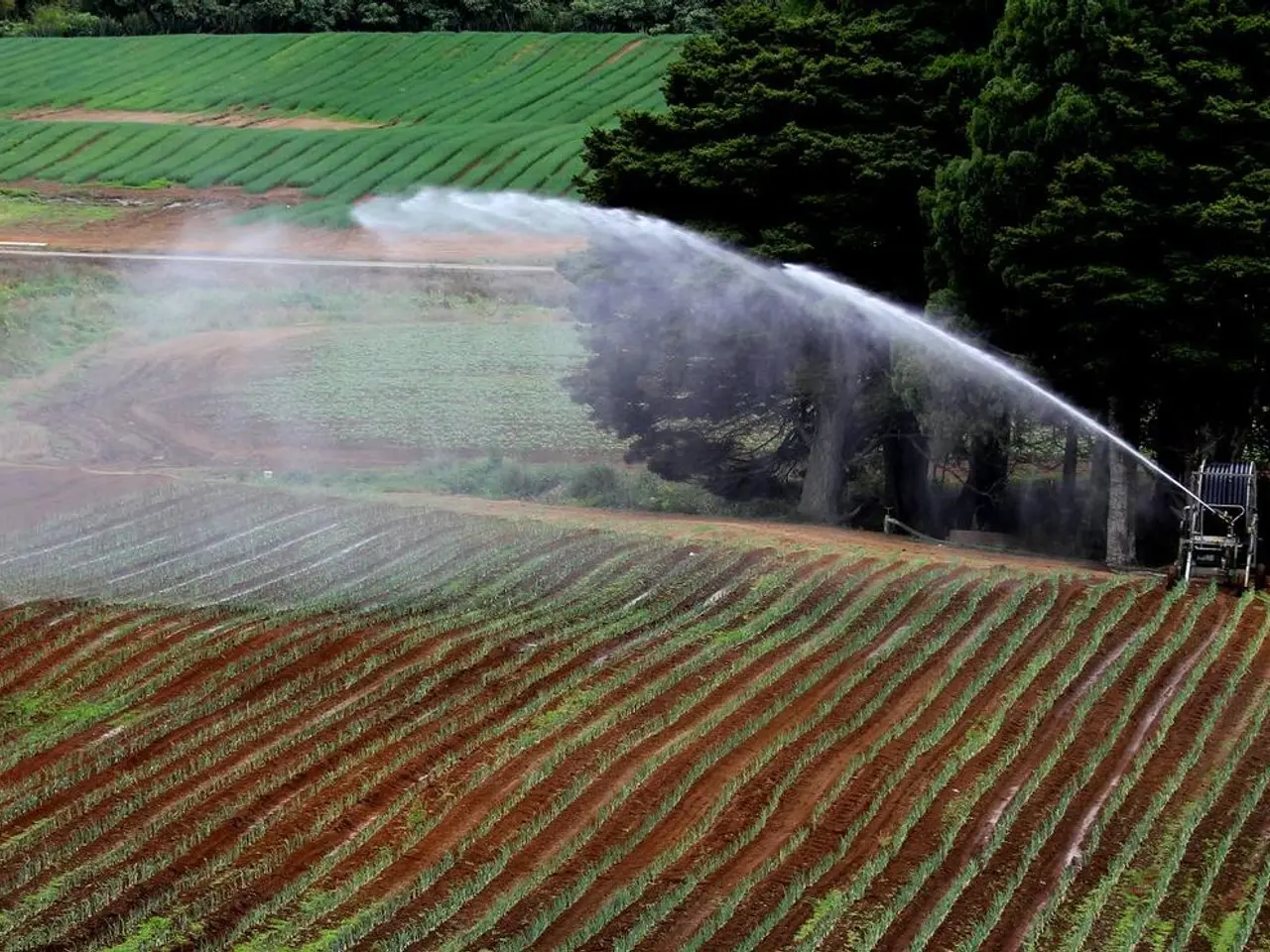Encouraging Female Participation in Agriculture for Food Stability
In a bid to increase farm output, improve household nutrition, and create a more inclusive rural economy, policy interventions are being implemented to make Indian agriculture gender inclusive. This approach aims to address constraints such as asset asymmetry, credit and insurance exclusion, technological divide, and data invisibility by ensuring equal access to resources, opportunities, and decision-making for women farmers.
In Kenya, SMS-based climate advisories have doubled women's maize yields, demonstrating the impact of technology on women's agricultural productivity. However, in India, mechanisms like e-NAM markets are largely inaccessible to women, with only 6% of women cultivators utilising these platforms. This is due, in part, to travel safety and custom hurdles that deter women's participation.
To address this issue, key policy measures include gender mainstreaming and budgeting, where dedicated funds are allocated towards gender-responsive agricultural programs to enhance women's participation and access to resources. For instance, the government has set aside ₹2.23 lakh crore in 2024–25 for such initiatives.
Promoting secure land tenure and ownership for women is another crucial step. This includes collective land leasing under laws like the Forest Rights Act, which empowers women-headed households and reduces asset asymmetry. However, asset asymmetry due to patriarchal inheritance norms continues to restrict land ownership for women in India, limiting their access to credit, crop insurance, and FPO membership.
Creating financial products designed for women farmers is another important aspect of these policy interventions. This includes improving accessibility to credit and crop insurance to mitigate economic exclusion. Currently, women in India receive only 7% of institutional agricultural credit.
Addressing the technological divide is also essential. This can be achieved through targeted extension services and innovations like schemes "Drone Didi" and "Mahila Shakti Kendra," which promote women’s adoption of agri-tech and climate-resilient practices.
Improving data collection and use to reflect women's agricultural contributions accurately is another key measure. The Agriculture Census in India still conflates worker and owner categories, leading to data invisibility for women.
Support for women-led collective action is also vital. Encouraging self-help groups and women’s federations that provide mutual support, training, and advocacy for agroecological practices and resource access fosters community resilience and economic empowerment.
Integrating feminist and agroecological approaches that prioritise women’s roles in ecological balance and sustainable farming is another important aspect. Programs like Andhra Pradesh’s Community Managed Natural Farming (CMNF) demonstrate the effectiveness of this approach.
In Rwanda, nationwide joint-spousal land titling has raised women's collateral access and led to a 20% increase in the adoption of soil-conserving terraces. Proposed reforms in India include universal joint land titling, collateral-free gender credit windows, gender-smart mechanisation hubs, climate-adaptive extension 2.0, and a care-responsive MGNREGS calendar.
Heat-stress illnesses and longer water-collection times reduce women's productive hours in India. Addressing these issues is crucial to increasing women's participation in agriculture and promoting equitable participation, empowerment, and sustainable rural development.
[1] World Bank. (2021). Women's Empowerment in Agriculture Index: India Country Profile. [3] International Fund for Agricultural Development. (2021). Gender Equality in Agriculture and Rural Development Strategy. [5] United Nations Development Programme. (2021). Human Development Report: Gender Inequality Index.
- To further enhance the economy and health-and-wellness of women farmers in rural India, interventions should focus on creating financial products that provide equal access to credit and crop insurance, as women currently receive only 7% of institutional agricultural credit.
- In line with the strategy for gender equality in agriculture and rural development, policy measures in India should address the technological divide by promoting targeted extension services and schemes like Drone Didi and Mahila Shakti Kendra, which encourage women’s adoption of agri-tech and climate-resilient practices.
- For a more inclusive Indian economy, it is crucial to integrate feminist and agroecological approaches that prioritize women’s roles in ecological balance and sustainable farming, such as Andhra Pradesh’s Community Managed Natural Farming (CMNF) program.




